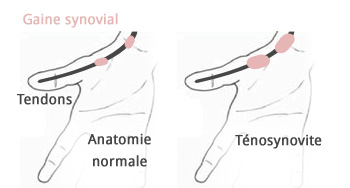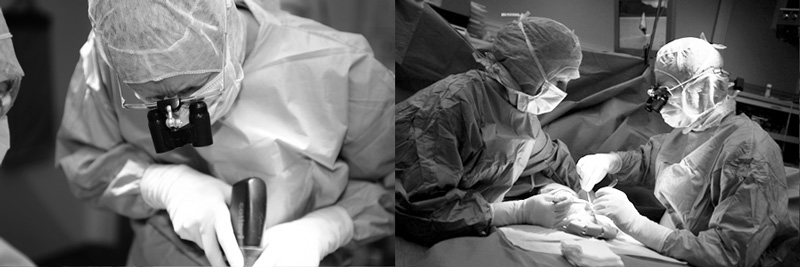responsive
What is de Quervain Tenosynovite ?
 It is an inflammation of the long abductor and short extensor tendons of the thumb at the wrist.
It is an inflammation of the long abductor and short extensor tendons of the thumb at the wrist.
Repeated microtrauma on these tendons, which are held tightly inside the wrist, cause inflammation of the tendon.
Women in their fifties, often suffering from arthritis, are commonly affected by this condition.
Repeated pinching movements, particularly of thumb and index fingers tend to be triggering factors of the condition, as it is commonly seen in dressmakers, laundry workers, car mechanics or office assistants.
Symptomes
responsive
Symptoms and diagnosis
A very specific pain is felt by the patient at the external side of his wrist.
The pain develops progressively over a few weeks in most cases, but it can also be sudden, and prevents a considerable degree of wrist movement.
The pain can be very strong and crippling, sometimes extending to the forearm.
Usually, an elongated swelling can be seen, reaching these tendons at the external side of the wrist.
When the wrist is moved towards the ring finger, and flexing the palm with cubital tilting, the tendons tense-up, causing pain. This is a typical diagnostic test for this type of tendonitis, along with a simple x-ray of the affected area.
Ultrasounds are used to confirm if there is any swelling of the long abductor and short extensor tendons.
Patient, une prise en charge axée sur
Traitement
De Quervain Tenosynovite therapy
Spontaneous healing might occur in few cases, but commonly pain will be permanent in 6 to 18 months, which can prevent any professional activity.
Treatment
Therapy must be medical - 80% of cases are healed by well managed medical therapy.
Therapy must combine:
- Rest for the wrist - any triggering factors must be eliminated..
- Local and oral anti-inflammatory medication.
- Use of a prosthetic device at night
Additional cortisone injections may be necessary to alleviate pain, if no healing occurs.
The patient will remain on sick leave, and a night prosthetic should be worn for 3 months in total.
Surgery

If medical therapy does not suceed, in very serious cases, surgery is an excellent alternative.
For patients with very painful and serious conditions, surgery is offered straight away.
A simple surgery procedureusing local anaesthetic can be carried out during an out-patient visit of half a day.
- A 3 to 4 cm cutaneous incision at the external side of the wrist is made to expose and treat the injury.
- Sensitive nervous bundles of the radial nerve at the dorsal side of the wrist are isolated and protected.
- The thin layer of fibres which contains the tendons is left open and the sinovial inflammation is removed to release these tendons from stress and allow them to move normally.
The injury is completely healed in 3 months.
The patient will go back to work progressively and if possible, to a job better suited to the condition.





